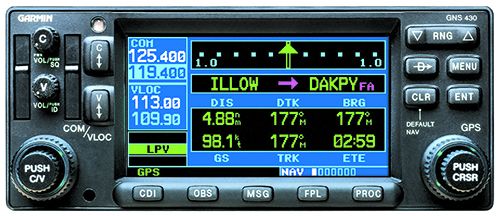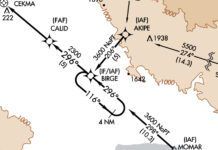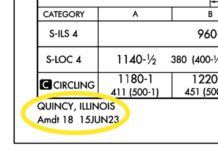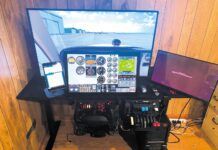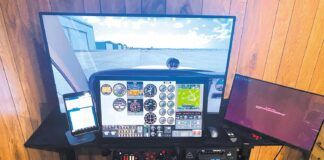Sim Challenge Workout
I love the magazine! Amazing work all around.
I just completed Jeff Van West’s November Sim Challenge (around Monterey, CA) on my own simulator. Wow! That was a challenge.
I’m fortunate enough to live in the Monterey Bay area and the next step was to fly it for real in my RV-6A. I was worried that I might annoy the controllers. NorCal controllers are superb and if I did annoy them, I was far too busy to notice. (Although, in the airplane, I began the challenge from Reid-Hillview (KRHV) over in San Jose.)
This was a wonderful workout. I’d love to see more challenges like this one.
Matthew Tripp
Scotts Valley, CA
It might be a while before we return to the Monterey Bay area, but you can be sure we’ll give you equally insane workouts in the future. Glad you like them.
Certified Only for BasicMed?
In the November article, “BasicMed Checkup,” Luca states that one of the requirements to use BasicMed is to, “…fly an aircraft that … is certified…” I can’t find that requirement in the regs. Could you supply a reference?
Ron Krohn
Pauma Valley, CA
Here’s the entire quote from the article, referring to some of the aircraft restrictions for BasicMed pilots:
“Fly an aircraft (IFR or VFR) that has a gross weight of 6000 pounds or less, fly at 18,000 feet MSL or less, fly at 250 knots or less (the aircraft could be capable of exceeding 250 KTS, but can’t be flown that fast), is certified with no more than six seats including the pilot’s seat. (Removing seats from a larger aircraft doesn’t qualify.)”
We can see how you might have misread the use of “certified” especially since it was emphasized with italics. However, we were merely trying to point out that a seven-place aircraft—certified or not—with a seat removed doesn’t qualify. Note also that this is different from the speed requirements where you can fly an aircraft capable of greater than 250 knots, but as a BasicMed pilot your speed limit is 250 knots.
You might also note that the original bill says that to qualify, the aircraft “is authorized under Federal law to carry not more than 6 occupants” but then to add a bit of confusion goes on to talk about “…maximum certificated takeoff weight…” (Emphasis added.)
Pilot Destiny
I am writing you about the December article, “Weather Accidents #10,” by Tim Vasquez. The article is fascinating to me in that the lesson learned is absolutely useless to me and, I would think, most pilots that I personally know and fly with regularly. I find this particular article offensive to my intelligence and flying skills, as well as my common sense.
Based on the description of the weather provided to the pilot by the briefer and the fact that the pilot could visually see the inclement weather on the ground, anyone in their right mind would have stayed home or used their automobile if it was so dire to get from Point A to B. The fact that it was snowing with ¼-mile visibility upon departure tells the story of his fate. He was doomed from the start and one can only assume must have had a death wish.
This was not an accident; it was his destiny.
Marc Slavin
Berlin, MD
Sadly, the attitude and decision making exhibited by the pilot in the article are far from uncommon; NTSB reports are rife with pilots who readily exceeded the limitations of “right-minded” decisions and ventured blithely into “wrong-minded” weather and flight operations.
One might also argue that this pilot exhibited many of the FAA’s Hazardous Attitudes: Anti-authority (Don’t tell me!), Impulsivity (Do something, anything quickly), Invulnerability (It wouldn’t happen to me), Macho (I can do it).
Writing off the accident as simply the pilot’s destiny misses the many points of the article: 1) Arrogance about equipment and skill, while ignoring reasonable limitations, kills. 2) Rules, procedures, even common-sense guidelines are written in blood. 3) Not all weather briefings are the same, or even accurate. 4) Add your personal knowledge and observations of existing conditions to the picture from the weather briefing. If you see snow that’s not in the briefing, don’t ignore it, but add it to your picture.
Where’d It Go?
After reading IFR Magazine for a few years I decided you would be the most knowledgeable people to ask a question. (Does flattery work?)
I was practicing the ILS or LOC/DME RWY 24 approach at KABE the other day and was puzzled by the display on my Garmin GNS 430 (non-WAAS). The NENTE fix (the last one before the runway) was not included as one of the fixes when I loaded the approach. Any idea why it’s not in Garmin’s database? (And, yes, my Garmin nav data is current.)
Frank Arrison
Doylestown, PA
The missing-fix issue is common in older navigators. The reason is simply space—the available storage in these navigators simply is insufficient to hold all the fixes, so they opt to omit some seemingly unneeded fixes on approaches. One could argue that these aren’t necessary for the safe execution of the approach, but it can at least be distracting nonetheless if you use these fixes for situational awareness. We’re told by Garmin that the 430’s WAAS upgrade included additional storage capacity and it isn’t affected by these missing fixes to the extent that the original 430, like yours, is.
We read ’em all and try to answer most e-mail, but it can take a month or more. Please be sure to include your full name and location. Contact us at [email protected].

